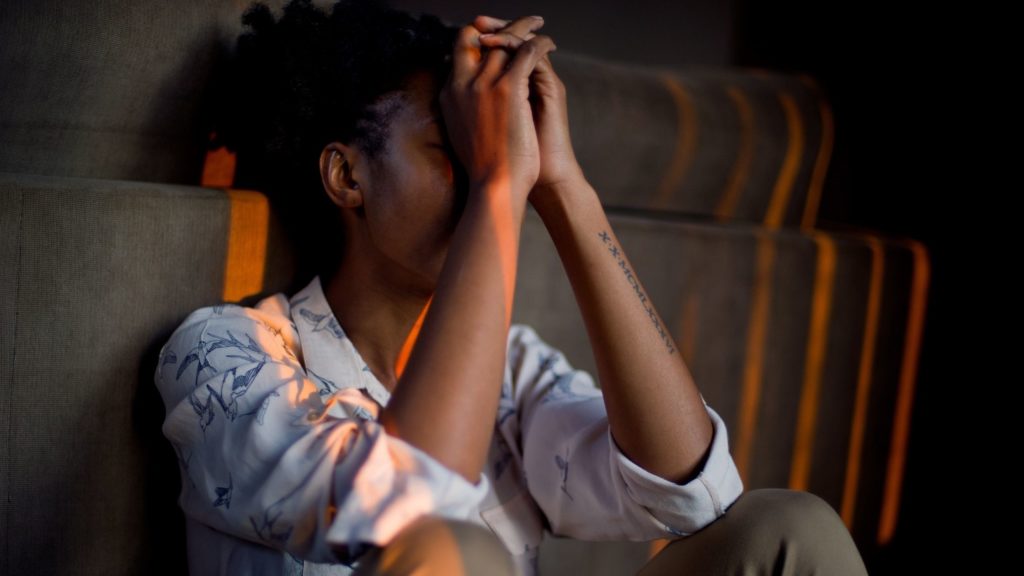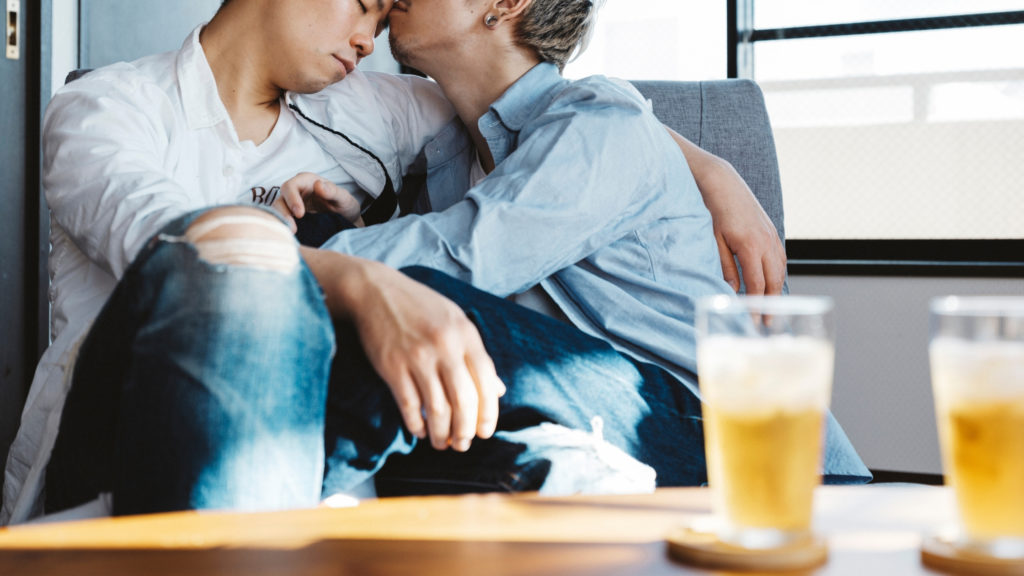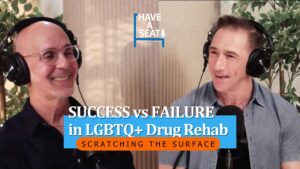Google “LGBTQ Addiction” and you’ll find information about all kinds of drugs devastating the community. Opioids and meth come up most frequently, but you’ll have a tough time finding information about one of the most common drugs LGBTQ people abuse. That drug? Alcohol.
On one hand, the lack of information about LGBTQ alcohol abuse isn’t surprising. After all, alcohol is everywhere and is socially accepted. On the other hand, given the high rates of alcohol abuse in the LGBTQ community, you’d think more people would be talking about it.
In fact, recent studies have found that twenty to 25% of the LGBTQ community have a moderate to severe drinking problem. In the general population, only 12.7% of people are categorized the same way.
Amongst adolescents, gays, lesbians and bisexuals are 90% more likely to use alcohol and drugs than their heterosexual peers.
On top of that, the Centers for Disease Control and Prevention (CDC) indicate that LGBTQ people start drinking earlier and continue drinking heavily into the later years of life.
But these statistics are just numbers. They don’t describe the lived experience of alcohol abuse amongst LGBTQ people, nor do they explain why LGBTQ people suffer from alcohol addiction so much more than their straight counterparts.
So what’s driving alcohol abuse in the LGBTQ community? And why is this group more impacted than the rest of the population?
Minority Stress Drives LGBTQ People To Drink

Whether it’s a micromanaging boss, overdue rent or kids who refuse to eat their vegetables, everyone experiences stress in their day to day life.
Members of the LGBTQ community experience these stressors, but they’re also burdened with other sources of stress straight people never have to think about. The Minority Stress Model describes this phenomenon. Essentially, people in marginalized groups experience additional stress as a result of prejudice or discrimination they encounter from the population at large.
In the context of the LGBTQ community, prejudice comes from the idea that same-sex attraction or a non-cis gendered identity is wrong or bad. Sometimes prejudice is subtle, like a receptionist at a pediatrician’s office asking a lesbian couple which person is the child’s “real” parent. Other times, it’s verbal or physical violence, like homophobic slurs shouted at a gay couple or an attack on a transgender woman.
Experiences like these, in addition to general stress, can lead to poorer health outcomes for marginalized groups. While some LGBTQ people develop positive coping methods, others turn to alcohol, drugs, and other risky behaviors to cope.
LGBTQ Drinking Culture Makes Drinking Easy, Accepted And Accessible
Ask any LGBTQ person and they’re sure to tell you—drinking is a big part of LGBTQ culture. This is due in part to the community’s history.
From the 1950s onwards, underground bars played an important role in the LGBTQ community. At that time, bars were the only places where LGBTQ people could express themselves without fear of repercussions.
Nowadays, gay bars remain some of the most accessible safe spaces for LGBTQ people to explore their identities, meet new partners or friends and escape heteronormative culture, if only for an evening.
Gay bars are so important to the LGBTQ community that some scholars liken them to churches. Both provide rituals, a sense of community and a routine. Taken from this perspective, alcoholism in the LGBTQ community makes much more sense and even seems inevitable.
It’s also worth noting corporations’ impact on alcohol abuse in the LGBTQ community. Alcohol brands like Absolut, Smirnoff and Budweiser were among the first big companies to come out in support of the LGBTQ community. They also regularly sponsor booze-soaked Pride events, which critics say enables a susceptible group to engage in unhealthy drinking behaviors.
With alcohol an ever-present element in the LGBTQ community, it’s no wonder so many LGBTQ people have a hard time avoiding it.

COVID-19 Has Made LGBTQ Alcohol Abuse Worse
While discrimination, prejudice and an alcohol-centric culture have contributed to the high rates of LGBTQ alcohol abuse in past decades, the coronavirus pandemic has had a major impact on alcohol abuse in the past few months.
When cities, states and entire countries started lockdowns to stem the spread of COVID-19, alcohol sales shot up. Nielsen reported a 54% increase in alcohol sales when comparing March 2019 and March 2020. They also found a 500% increase in online alcohol sales in late April. What’s more, a Morning Consult poll of 2,200 U.S. adults conducted in early April found that 16% of all adults said they were drinking more during the pandemic.
While these statistics describe the population at large, they do give some sense of what’s going on in the LGBTQ community. The COVID-19 pandemic and the resulting shelter-in-place orders have been linked to a decrease in positive social interactions, an increase in negative social interactions, unemployment concerns and financial instability in members of the LGBTQ community. All of these factors contribute to poor mental health outcomes, including substance abuse.
Lack Of Culturally Competent Health Care Isn’t Helping
First and foremost, gay and lesbian adults are about twice as likely as the general population to lack health insurance coverage. Bisexual and transgender individuals are even more likely to be uninsured.
This is due in part to employment discrimination (something nearly 50% of LGBTQ people experience). Being unemployed often leads to gaps in coverage or lower-quality coverage. Being under- or uninsured has consequences on health-related quality of life, including access to addiction treatment.
But lack of coverage is just one piece of the puzzle. A real or perceived lack of cultural competence in the healthcare system is also a barrier to quality substance abuse treatment. This could mean encountering providers who are unaware of specific LGBTQ needs or even those who are outright hostile towards the community. As such, LGBTQ people often feel discouraged from seeking substance abuse treatment.
Specialized Treatment Options For Alcoholism Are Needed
If you, or someone you love, is part of the LGBTQ community and is suffering from alcohol abuse, we encourage you to seek out an LGBTQ-affirming treatment center.
Various case studies have found that these programs are more effective than traditional programs in treating LGBTQ alcohol and substance abuse problems. Providers in these programs are experienced in treating not only alcohol addiction, but also the co-occurring disorders that contribute to and exacerbate addiction.
What’s more, LGBTQ-affirming centers put LGBTQ people in contact with other members of the community, something that makes treatment easier, promotes healing and creates a sense of security.
At La Fuente Hollywood Treatment Center, we recognize the importance and the value of LGBTQ-affirming addiction treatment. That’s why we specialize in treating only members of the LGBTQ community.
If you’re ready to start living a healthier, more productive life, then contact us and let’s start your recovery process.

[contact-form-7 id=”14454″ title=”Treatment Contact Form”]




